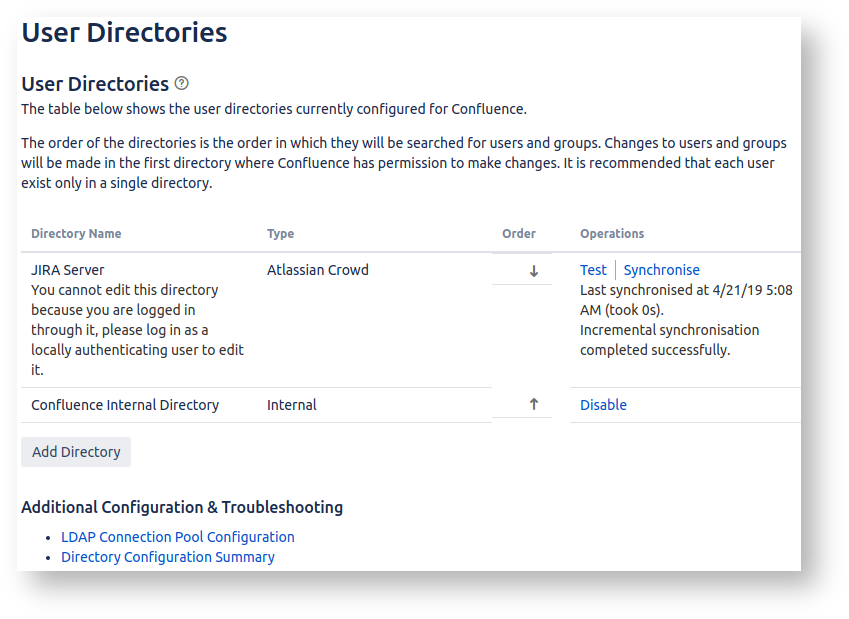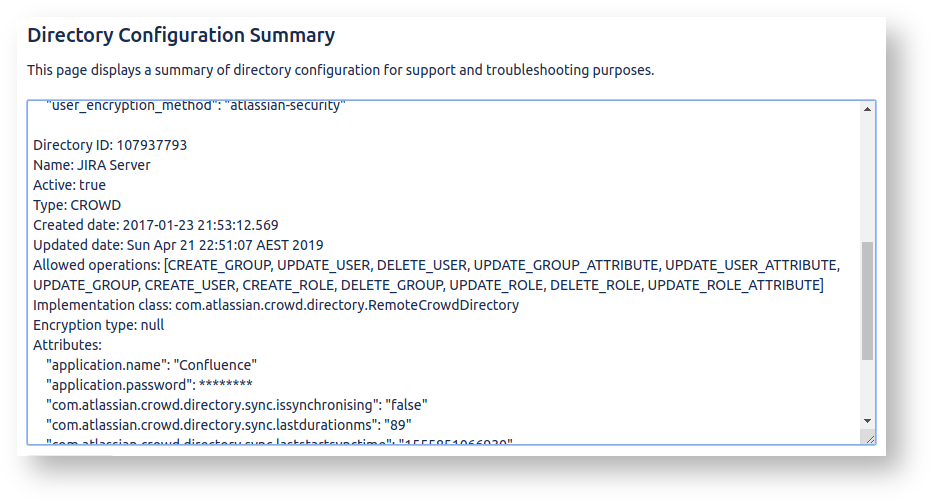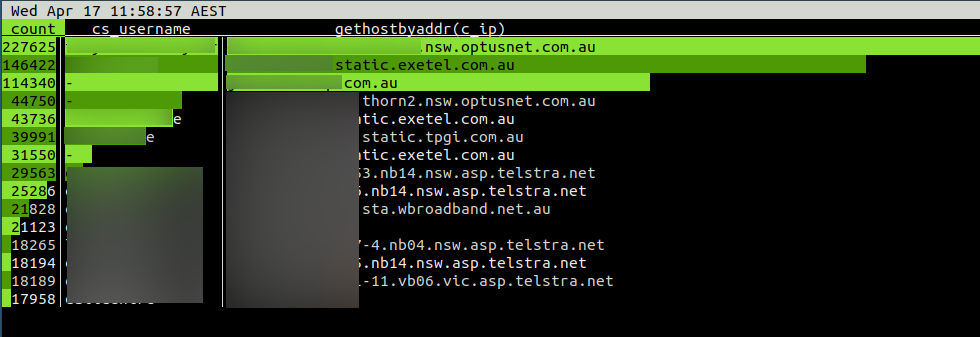...
| Excerpt |
|---|
Strange running processes? 100% CPU use? Security emails? Odds are your server has been hacked. This guide is for system administrators who are not security experts, but who nevertheless need to recover from a hacked Jira/Confluence installation. |
| Table of Contents |
|---|
Something is fishy..
It began with some emails to root on the server, which get redirected to my mailbox:
...
Yes, Confluence has been hacked
What to do?
At this point, the server is a crime scene. An attacker is running arbitrary commands as the confluence user, meaning they are able to access everything in Confluence, regardless of permissions. Think through what your Confluence instance contains. Passwords to external systems? Confidential data about your business? Confidential information about clients? The implications of a breach depend on what confidential is stored, and the laws of your country. In Australia, you may have legal obligations under the Notifiable Data Breaches scheme, and may want to report the intrusion at https://www.cyber.gov.au/report
...
The technical response described here is, I think, appropriate for a small to medium business without extraordinarily sensitive data.
Preliminaries
Some quick things to do before anything else:
Disable SSH agent forwarding
I know I shouldn't, but for some servers I have ForwardAgent yes in SSH so I can easily jump between servers. Agent forwarding to a hacked server is a really bad idea, as the matrix.org experience illustrates. Turn agent forwarding off in your ~/.ssh/config before continuing.
SSH in and become root
ssh in and sudo su - if necessary.
Record your session
If we have to go tramping through a crime scene, let's at least record what we see. As soon as you SSH in to the server, run:
...
Now everything you see, even ephemeral information like top output, is logged.
Log network activity
On the server, as root, run:
...
This records all network activity on the server. This takes a few seconds to do, and may provide valuable evidence of e.g. data exfiltration.
Snapshot system activity
Run:
| Code Block |
|---|
mkdir -p ~/hack/ pstree -alp > ~/hack/pstree cd ~/hack curl https://busybox.net/downloads/binaries/1.21.1/busybox-x86_64 -o busybox chmod +x ./busybox |
Lock down the system
Do not shut down the server. Doing so would lose potentially critical information. In my case, the malicious scripts are running from /tmp/ , so restarting the server would lose them.
...
The server is now completely locked down, except for (hopefully!) SSH connections from you.
Back up important files
If your VPS infrastructure allows you to take a snapshot of a running server, now is the time to do so. Who knows, perhaps there is a sleep 1000; rm -rf / time bomb ticking away.
...
Now if the server spontaneously combusts, you have at least salvaged what you could.
Consider locking down other affected systems
You now have a locked down, backed up server. It is time to consider whether other systems might have been hacked too:
Does Confluence store its user passwords on an external system, like AD, LDAP or Jira? Did Confluence have permission to instigate password resets? If yes and yes, that is bad news: your hacker may have reset passwords reused on other systems (e.g. Jira), and thereby accessed those other systems.
Expand title How do I tell if Confluence has read-write access to LDAP/AD/Jira? To tell:
- log in to Confluence as an administrator
go to the User Management admin section (type 'gg' then 'user management')
Confluence doesn't make our lives easy here. You'll probably see something like:
This doesn't tell us if our access to the 'JIRA Server' user directory is read-only of read/write. So click on the 'Directory Configuration Summary':
If you see a full set of 'Allowed Operations', as above, that means Confluence has permission to modify user passwords in Jira. A read-only Jira would have a much shorter list of allowed operations:Code Block Allowed operations: [UPDATE_USER_ATTRIBUTE, UPDATE_GROUP_ATTRIBUTE]
If your user directory is read-write for Confluence, then check if that system if any user passwords were reset, e.g. in Jira's audit log:
What could a malicious
confluenceuser see in the system? Check the permissions of user directories in/home. Are they world-readable/executable? If so, anything sensitive in those home directories may have been exposed.Tip Assuming you use systemd to launch Jira/Confluence, you should be running with ProtectSystem and ProtectHome parameters:
Code Block # Make /usr, /boot and /etc read-only. ProtectSystem=full # /home, /root and /run/usr should be inaccessible/empty. ProtectHome=yes
This ensures Jira/Confluence cannot see directories they don't need to.
Do not set
PrivateTmp=nobecause that preventsjconsoleand friends from communicating with the Java process.- How are external backups done? Are credentials to the backup system compromised? If so, move to protect your backups before anything else.
In our case, external backups are stored on tarsnap. The backup process runs as root and the tarsnap key is only root accessible. I was fairly confidentroothas not been compromised. - Are there usernames and passwords stored as plaintext in Confluence? If so, consider those systems breached too.
Understand the attack vector
Once you have locked down all potentially affected systems, the damage should be contained. How did the attacker get in?
...
| sha1 | 9a6ae3e9bca3e5c24961abf337bc839048d094ed |
| md5 | b39d9cbe6c63d7a621469bf13f3ea466 |
Attack vector 1: Application-level vulnerabilities
Most of the time, breaches will be due to known security vulnerabilities, of which Jira and Confluence have a steady stream.
...
In my example, there are some hits, but fortunately all with 404 or 301 responses, indicating the JSPs do not exist:
Attack vector 2: User account compromises
Perhaps a user's password has been guessed (e.g. by reusing it on other services - see https://haveibeenpwned.com), or the user succumbed to a phishing attack and clicked on an XSRFed resource. If the account had administrator-level privileges, the attacker has full Confluence access, and possibly OS-level access (through Groovy scripts or a custom plugin).
...
- Check the audit log for suspicious admin activity, but be aware that the audit log is not trustable at this point.
Identify accounts whose password has recently changed, by comparing password hashes with that from a recent backup.
This command compares thecwd_usertable from a monthly backup to that from the currentconfluencedatabase:Code Block # vim -d <(pg_restore -t cwd_user --data-only /var/atlassian/application-data/confluence/backups/monthly.0/database/confluence) \ <(sudo -u postgres PGDATABASE=confluence pg_dump -t cwd_user --data-only)(diffing database dumps like this is a generally useful technique, described here)
Check for users logging in from strange IPs, e.g. foreign countries or VPSes.
This lnav command prints a summary of Confluence access counts grouped by username and originating IP hostnameCode Block jturner@jturner-desktop:~/redradishtech.com.au/clients/$client/hack$ lnav var/log/apache2/confluence.$client.com.au/access.log* -c ";select count, cs_username, gethostbyaddr(c_ip) from (select distinct cs_username, c_ip, count(*) AS count from access_log group by 1,2 order by 3 desc limit 15) x;"
The originating IPs do not look suspicious for a small Australian business:
Attack vector 3: Lower-level vulnerabilities
It is possible the hack was doing through SSH account compromise, webserver vulnerability, Java vulnerability or something more exotic. Check w and last for suspicious logins, as well as dmesg and /var/log/*.log (with lnav) for errors.
Restoring critical user access
Finding the intruder's point of entry isn't always possible in a hurry. Often though, we can say for certain that certain IPs and usernames are not the source of the hack, and can be let in safely to reduce business impact of service unavailability.
...
| Code Block |
|---|
lnav /var/log/apache2/{jira,confluence}.$client.com.au/access.log* -n -c ";select distinct c_ip from access_log where cs_username != '-' ;" > valid_ips.txt |
Resume normal business activities
Once an operating system account has been compromised, it's generally safest to assume that the attacker has also found a local privilege escalation, achieved root, has installed trojan variants of system binaries. If so, it is game over: time to build a new server from scratch.
...
check additional tables against the backup in accordance with your level of paranoia.
Going forward..
The aftermath of a hack is a golden time in which management are suddenly extremely security conscious. Take the opportunity to make long-term changes for the better!
...




